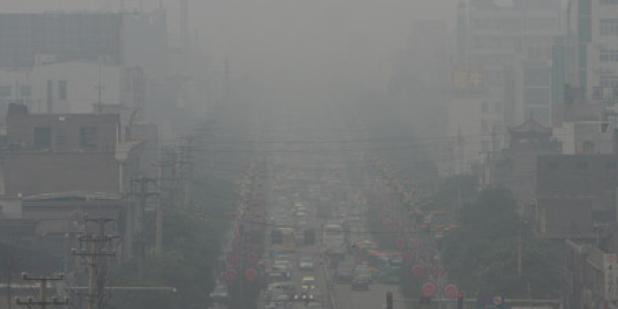Happy Lunar New Year from the USC US-China Institute!
Dirty air takes lives

By Clayton Dube
ON AN AVERAGE DAY IN CHINA outdoor air pollution causes the premature death of roughly 1,000 people. This is the conservative estimate of World Bank researchers utilizing surveys collected by Chinese government agencies and scholars. A number of news organizations reported that an internal World Bank report put the number who die prematurely each year at 350,000 to 400,000. The World Bank’s preliminary report states that air pollution costs the average Chinese urbanite 18 years of life. In 1997, the World Bank estimated 50,000 Chinese died prematurely each year due to air pollution.
The World Bank has also estimated that air pollution costs China between one and four percent of gross domestic product (GDP) growth each year.
These findings are the products of studying large populations over an extended period. This methodology for calculating the excess deaths due to air pollution (that is the number of people dying prematurely due to lung cancer, cardiopulmonary diseases, and other problems) was developed in influential studies of dozens of American cities. For this report, World Bank researchers utilized mortality data from 30 cities and pollution data from over 600 cities. In the preliminary report, the World Bank acknowledged that estimates of premature deaths draws on incomplete data and that additional research is required.
The Financial Times and other newspapers reported that the Chinese government had insisted the estimate of premature deaths be withdrawn from the final document. On July 5, Qin Gang, a spokesperson for the Ministry of Foreign Affairs, denied the government had requested the deletion.
On July 11, the World Bank’s China director, David Dollar, issued a statement which included the following points:
- China asked the World Bank to estimate pollution’s cost to China
- Chinese and international specialists worked on this study for more than three years
- The total health and non-health cost of air and water pollution in China is 5.8% of the nation’s GDP
- China’s State Environmental Protection Agency agreed to the draft report issued earlier in 2007
- China’s government and the World Bank have been and are committed to reducing pollution and its costs, 60% of World Bank lending to China has been for environment-related projects
China’s reliance on coal has declined from 69% of total energy production in 1990 to 30% in 2004. At the same time, total energy consumption has risen dramatically while energy efficiency (the amount of energy needed to produce $1 GDP) remains relatively low (about 20% lower than that of Japan, Europe, and North America). As a consequence, air pollution has worsened, though the government has enacted laws and set targets to reduce sulfur dioxide and other emissions.
Those targets have been consistently missed. The government’s tenth five-year-plan concluded in 2005. By then, sulfur dioxide emissions were 42% above the target the government set in that plan. Soot emissions were 11% above the target set. Today, China’s greatest urban air pollution threat is that posed by particulate matter.
Sources:
David Dollar, "Statement from World Bank China Country Director on 'Cost of Pollution in China' Report," July 11, 2007.
Richard MacGregor, “750,000 a year killed by Chinese pollution,” Financial Times, July 2, 2007.
Organisation for Economic Cooperation and Development, Environmental Performance of China, July 2007: http://www.oecd.org/document/47/0,3343,en_33873108_36016481_37809647_1_1_1_1,00.html#How , accessed July 23, 2007.
World Bank, Clear Water, Blue Skies: China’s Environment in the New Century, Washington, DC: World Bank, 1997.
World Bank, Cost of Pollution in China, Conference Edition, March 2, 2007.
Xinhua News Agency, “China denies requiring WB to delete environmental data from report,” People’s Daily, July 5, 2007.
Featured Articles
We note the passing of many prominent individuals who played some role in U.S.-China affairs, whether in politics, economics or in helping people in one place understand the other.
Events
Ying Zhu looks at new developments for Chinese and global streaming services.
David Zweig examines China's talent recruitment efforts, particularly towards those scientists and engineers who left China for further study. U.S. universities, labs and companies have long brought in talent from China. Are such people still welcome?






